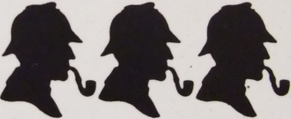Medicine is no longer quite so full of time to ponder as it once seems to have been. Rumination and consideration have taken a back seat to efficiency. Protocols and pathways seem to be the order of the day, and once a patient is on a pathway, it can be very difficult to get them out of the diagnostic rut they have found themselves in, which more often than not is a medical cul de sac.
A paper in the PMJ on the clinical and diagnostic findings in patients with elevated CSF bilirubin set me off thinking about these dead-ends.
The paper takes a fine toothed comb to the cases of patients who underwent CSF bilirubin analysis as part of their assessment for headache over the course of a decade at two hospitals in Northern Ireland. The paper explores some of the ins and outs of CSF analysis for possible aneurysmal SAH and gives some helpful insights. One curiosity that stood out was the 13 patients in whom there was a complete lack of history of headache (not even simply not recorded as far as the presented data suggest) who underwent CSF bilirubin testing. I suspect that this was over-eager requesting becuase CSF had been obtained, and all the boxes got ticked. As far as this paper is concerned though, this practice diminishes the specificity of the test and as such erode the positive predictive value of the test.
However, my interest was piqued by the natural use of a term that will be well understood by medics who work in acute medical units, and seems to have become part of our everyday clinical language – the “CT negative headache.” This terminology has cousins that are probably more often heard, but are just as beguiling in their simplicity and ease of use, but troubling in terms of their complete lack of detail. These terms can be sprinkled liberally onto the discharge summary – neatly encapsulating the battery of tests that a patient was subjected to – resulting in normal findings (or non-significant ones at least) but sadly they entirely miss the point.
Pathways are designed with an end diagnosis in mind, and if a patient flows along the pathway, ticking the boxes as they go, or being forced to occupy them (the crime of procrustes) then they may usefully end up with the correct treatment, given in a standardised way with utmost efficiency. However, there are few pathways with “diagnostic uncertainty” as the start point. There are even fewer that allow one to consider all of the alternative diagnoses (the CSF paper above reminds us that there are over 100 causes of sudden and severe headache described) that might contribute to the clinical conundrum facing us.
As such – if your patient comes to hospital nowadays with chest pain, they may well go home with a diagnosis of chest pain (troponin negative). This has not necessarily helped many of the players in this scene. If the patient’s main concern was specifically that they were having a heart attack – this could be reassuring. However, if I was the GP who had asked for the opinion of their local specialist service, I might feel a little short-changed. Negative diagnoses do not contribute a great deal to a positive outcome. Instead, it might be more helpful for the patient to go home with at least a list of possible or probable alternatives – costochondritis, or oesophageal spasm, or dyspepsia, or my personal favourite when I see it – the slipped rib syndrome
Negative diagnoses are undoubtedly here to stay – it is just too easy to be able to exclude the killer diagnoses, assure yourself and your patient that they are safe, and then send them on their way. However, as educators, and as clinicians we must ensure that our adherence to guidelines, protocols and pathways do not allow our curiosity to atrophy, and through our own acceptance of the negative diagnosis, let this practice to be seen as the norm.
Sherlock Holmes used to rate problems by the number of bowls of tobacco required to think them through – in the world of multi-morbidity there are plenty of three pipe problems to be faced. And whilst I don’t lament the passing of the ward smoking room, I think there is definitely something to be said for bringing back the art of the positive diagnosis, even if it requires a little rumination, and wandering from a well-marked pathway.
